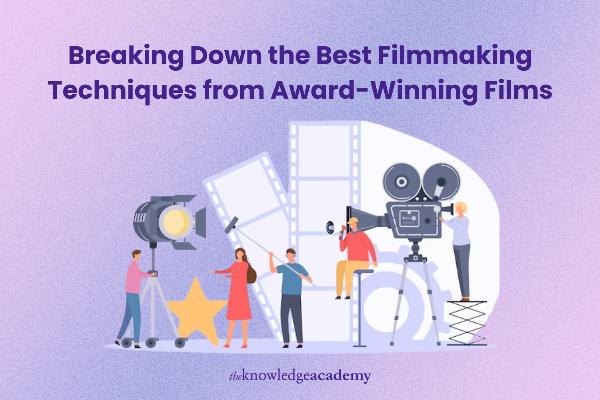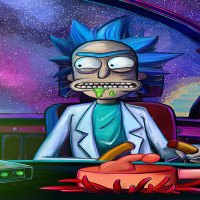Breaking Down the Best Filmmaking Techniques from Award-Winning Films

Strong 8k brings an ultra-HD IPTV experience to your living room and your pocket.
Have you ever found yourself completely mesmerised by the magic of a film? The kind where every scene, every cut, and every colour seem meticulously crafted to draw you deeper into its world? Well, that magic doesn't just happen by chance. It's the result of a series of deliberate and sophisticated Filmmaking Techniques employed by some of the most talented individuals in the industry.
In this blog, we'll delve into the creative processes behind award-winning films, exploring the key techniques that make them stand out. So, grab your popcorn and let's uncover the secrets that make cinema so spellbinding!
Table of Contents
- Embracing Visual Storytelling
- Mastering the Art of Editing
- Innovative Use of Sound
- The Power of the Script
- Utilising CGI and Special Effects
- Exploring Character Development
- Harnessing the Power of Lighting
- Capturing the Essence through Cinematography
- The Influence of Direction
- Final Take
Embracing Visual Storytelling
Visual storytelling is paramount in film, and award-winning movies leverage this to the fullest. The use of compelling visuals to narrate a story can significantly enhance the emotional impact. For instance, the choice of colour palettes often reflects the mood of the film—dark hues for thrillers, vibrant colours for comedies. Moreover, the framing and composition of each shot are carefully considered to add layers of meaning, guiding the viewer’s attention and emphasising important elements of the story.
Mastering the Art of Editing
Editing is where the magic happens in the cutting room. It's not just about cutting from one shot to another; it’s about pacing the narrative so that it builds tension, emotion, and impact. For example, cross-cutting can be used to build suspense by showing two events happening simultaneously. This technique was used brilliantly in Christopher Nolan’s Inception, where the parallel action sequences heighten the climax’s thrill.
Innovative Use of Sound
Sound design is another crucial element that award-winning films master. The choice of sound, or the absence of it, can make or break a scene. The eerie silence in a horror scene or the bustling background noise in a busy city setting can immerse audiences completely. Films like Gravity use sound innovatively, where the lack of sound in space scenes creates a terrifying yet realistic experience.
The Power of the Script
At the heart of every great film is a powerful script. It’s the blueprint of the film, encompassing everything from dialogue to stage directions. The script dictates how compelling the characters are, how engaging the dialogues are, and how the plot unfolds. Quentin Tarantino’s films, for instance, are known for their sharp dialogues and well-crafted narratives that keep audiences hooked.
Utilising CGI and Special Effects
In contemporary cinema, CGI and special effects have become indispensable, especially in genres like sci-fi and fantasy. These techniques allow filmmakers to bring their most imaginative ideas to life. Movies like Avatar and The Lord of the Rings showcase the incredible potential of special effects, creating worlds and creatures that are both enchanting and believable.
Exploring Character Development
Character development is essential for audience engagement. The more relatable and dynamic the characters, the more invested the audience becomes. This technique involves showing growth and changes in the characters throughout the film, which can be achieved through various scenarios and interactions. Films that excel in this area often leave a lasting impact on the audience, as seen in The Shawshank Redemption.
Harnessing the Power of Lighting
Lighting in film is not just about ensuring that the audience can see the actors. It's a pivotal storytelling tool that sets the tone and mood of each scene. Effective lighting can suggest a particular time of day, enhance the drama, or subtly focus the viewer’s attention on a specific detail or character. Films like Blade Runner 2049 use lighting to create a futuristic yet grim atmosphere that supports the narrative's dystopian themes. Techniques such as backlighting, spotlighting, and the use of shadows are employed to evoke emotions and elevate visual storytelling.
Capturing the Essence through Cinematography
Cinematography goes beyond the mere act of recording motion. It's about crafting a visual narrative that complements the film's script and directing style. The cinematographer’s choice of camera angles, movement, and lenses can profoundly influence how the story is perceived. For example, long shots are often used to portray isolation or detachment, while close-ups can convey intimate emotions and details. Movies like The Revenant excel in cinematography, using natural lighting and long, uninterrupted takes to immerse the audience fully in the raw and unyielding wilderness.
The Influence of Direction
Finally, the director’s vision brings all these elements together. The director decides how to interpret the script, how to visualise it, and how to guide the actors' performances. Directors like Alfred Hitchcock, known as the master of suspense, have a distinct style that is visible throughout their films. The director’s unique touch can make a film feel cohesive and complete.
Final Take
Filmmaking is an art form that combines creativity with technical expertise. By examining these techniques used in award-winning films, aspiring filmmakers and enthusiasts can gain insights into the craft of filmmaking. Each element, from sound and editing to scripting and directing, plays a vital role in creating the cinematic magic that captivates audiences around the world. Let these revelations inspire you to appreciate films more deeply or to create your own cinematic masterpiece.
Note: IndiBlogHub features both user-submitted and editorial content. We do not verify third-party contributions. Read our Disclaimer and Privacy Policyfor details.







